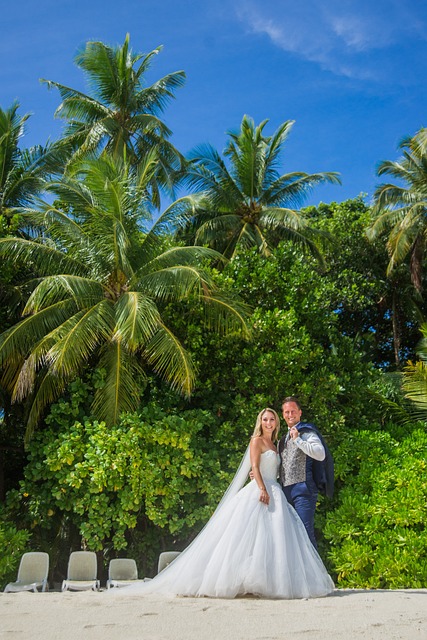The Maldivian society is a unique culture found in the Indian Ocean. With a mix of ancient and modern customs, the Maldivian people have created a fascinating culture full of interesting facts and traditions. From its unique language to its unique religious practices, the Maldivian society has much to offer the curious mind. In this blog post, we will explore ten of the most interesting facts about Maldivian society.
1) The Maldives is an archipelago made up of 1,192 coral islands.
The Maldives is made up of over a thousand islands, which form an archipelago in the Indian Ocean. The Maldivian society has many traditions, cultures, and customs due to the diversity of the islands and its people. This makes for a unique blend of old and modern life in the country. The Maldives is known for its beautiful beaches, crystal clear water, and perfect climate. The Maldivian society is very friendly and welcoming, with warm hospitality and helpful locals.
2) The population of the Maldives is around 530,000.
The population of the Maldivian society is mainly concentrated on a few of the islands, with the majority of the people living on the largest island, Male. The population has grown steadily over the past few decades due to an increase in tourism, but it still remains relatively small. Most Maldivians are ethnic Dhivehis, and the culture is largely influenced by Islam, which is the official religion of the country.
3) Islam is the official religion of the Maldives.
The Maldivian society is predominantly Islamic, with over 99% of the population adhering to Sunni Islam. The majority of the Maldivian population are members of the Hanafi school of Sunni Islam, which is practiced throughout the country. There are no non-Muslim places of worship in the Maldives, and non-Muslims are not allowed to preach or proselytize publicly. Islamic holidays are observed throughout the country, including Eid-ul-Fitr, Eid-ul-Adha and Prophet Mohammed’s birthday.
4) The Maldives has a high literacy rate of 98.4%.
This is due in large part to the focus on education that is placed within the Maldivian society. The government has put a strong emphasis on education and has created opportunities for people to access education easily and without any hindrances. This has resulted in a high literacy rate that helps contribute to a more informed and knowledgeable population.
5) The life expectancy in the Maldives is 75 years.
This is an impressive statistic, especially considering the size of the population. The high life expectancy in the Maldives can be attributed to a number of factors including a generally healthy diet, a low crime rate, and advanced medical services. This is indicative of a healthy Maldivian society, one that values the health and well-being of its citizens. With such a long life expectancy, Maldivian society is one with a bright future.
6) The official language of the Maldives is Dhivehi.
Dhivehi is the language spoken by the majority of people in Maldivian society and is also the official language of the country. It is believed to have originated from Sanskrit and is an Indo-Aryan language, with some influences from Arabic. Dhivehi has its own writing system, called Thaana, which was developed in the 19th century. It has been used for centuries to record the culture, literature and history of the Maldives. It is the main language of communication in the Maldives and is spoken by the majority of people living in this archipelago nation.
7) Fishing is the main industry in the Maldives.
Fishing is the cornerstone of Maldivian society, providing employment and income to thousands of people. It is the main source of food and livelihood in the islands and is deeply embedded in the country’s culture and heritage. The government has made efforts to support and modernize the fishing industry in order to ensure its sustainability. Fishing is a major contributor to the economy and provides a source of foreign exchange earnings, while also helping to maintain the country’s important marine biodiversity.
8) Tourism is also a major contributor to the economy of the Maldives.
The Maldivian society has greatly benefited from its booming tourism industry. Tourism is one of the biggest sources of revenue in the country, accounting for almost 30% of the nation’s GDP. Tourists flock to the Maldives year-round to experience its stunning beaches and luxurious resorts. Additionally, diving and snorkeling have become popular activities in the Maldives, as it provides tourists with a unique opportunity to explore its vibrant coral reefs. The Maldivian government has also established various initiatives to protect the natural environment and encourage sustainable tourism.
9) The currency of the Maldives is the Rufiyaa.
The Rufiyaa is the national currency of the Maldivian society and it is used in all commercial transactions within the country. It is divided into 100 Laari and is available in both coins and notes. The Maldivian government manages the circulation of the Rufiyaa, which is issued by the Central Bank of the Maldives. The exchange rate of the Rufiyaa to other currencies varies depending on the prevailing economic conditions. The Maldivian economy is based mainly on tourism and fishing. Fish is one of the most important foods for Maldivian society; thus, fishing plays a significant role in its culture and economy. Education is also highly valued within the Maldivian society as there are several schools throughout the islands that teach students from primary through the secondary level. Religion plays an important role in shaping the norms and values of society; over 85% of the population identifies as Sunni Muslims.
10) The capital city of the Maldives is Male.
Male is the largest city and capital of the Maldives. Located on the island of Kaafu, it is the political and economic hub of Maldivian society, hosting a majority of the country’s government offices, financial institutions, and international businesses. With a population of over 130,000, Male is one of the most densely populated cities in the world. Male is renowned for its bustling harbor, historical sites, cultural attractions, vibrant nightlife, and picturesque beaches. It’s a popular destination for tourists and a great place to learn about the culture and history of the Maldivian society.

